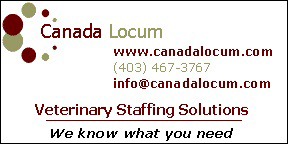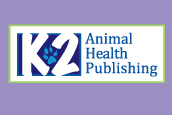
![]()

The Role of the Veterinary Technician in the Delivery of Veterinary Dental Care
As with all areas of veterinary medicine, there are limitations, imposed by law, on what procedures a technician is allowed to perform, though there may be some differences between jurisdictions. In Ontario, where I live and practice, veterinarians work under license from the College of Veterinarians of Ontario (CVO). The CVO has produced policy and position statements on veterinary dental care. As well, the American Animal Hospital Association has produced the AAHA Dental Care Guidelines for Dogs and Cats.
In brief, the limitations imposed by these various guidelines and position statements are that veterinary technicians shall not diagnose, prognose, prescribe or perform major surgery, e.g. surgery involving bone or alteration of the hard tissues of the teeth. It is the responsibility of the attending licensed veterinarian to make the diagnosis, formulate the treatment plan, prescribe the course of action or any medication and to actually do all oral surgeries such as extraction, periodontal surgery (root planning etc.), biopsy and wound closure.
With these limitations in mind, let us examine some of the areas where your skills and training can be of great value to your patients and to your practice.
Sometime prior to the animal’s arrival for dental evaluation and cleaning (a few days before perhaps), review the medical record for any notations that might impact on the treatment plan and discuss them with the doctor. There may be a note about PU/PD that suggests the need for some pre-operative blood work and urinalysis. There may be a note about an antibiotic reaction in the past that should be flagged. Whatever it may be, reviewing the records helps to avoid problems and to ensure maximum benefit at minimum risk.
Review the previous dental records, if any, to see what areas were of concern in the past. There may have been a tooth with a 4 millimeter deep periodontal pocket that will need careful reassessment to see if prior treatments and home-care have been effective in controlling the situation.
By the time the animal is presented for admission, all pre-operative diagnostics have been done, the results interpreted and the doctor has given approval to proceed. Before letting the client leave, you should spend a few minutes with them outlining the planned treatment, explaining the need for general anesthesia, and outline what is involved in doing a thorough oral hygiene procedure. Try to get a sense of how the owner would like you to proceed in the event of a surprise (extraction, try to treat it or referral to a specialist). Try to get some idea of the level of commitment that the owner is willing to make. This commitment may be financial (how much treatment are they willing to pay for) or in respect to home-care (will they brush the teeth daily to control plaque). Finally, get a signature of consent to carry out the proposed treatment and be certain to get a phone number where the client can be contacted intra-operatively for discussion of new findings and how they impact the treatment plan and estimate.
Prior to anesthetizing a patient, you should do another careful examination of the pet. Assess skull type as it will relate to the teeth. Brachycephalics (Boxer, Lhasa Apso...) often have severe crowding of maxillary teeth leading to periodontal disease as well as malocclusions which can cause both soft tissue and dental trauma. Look for any facial swellings or asymmetry and any nasal or ocular discharges as these may be due to a dental infection or a tumour. Any such findings should be brought to the attention of the doctor involved in the case for further evaluation before proceeding with the anesthetic.
Do as thorough an oral examination as possible to review what sort of case it is going to be (simple scale and polish or whole-mouth extraction). This helps you ensure that you have all necessary equipment and materials ready BEFORE you start and that you have enough time scheduled for the case.
With the animal at an appropriate plane of anesthesia, monitors in place and everything stable, you can start the procedure. The basic responsibilities of the dental technician include:
• antibacterial oral rinse
• gross coronal scaling
• careful evaluation of the entire oral cavity and each tooth including exploration and periodontal probing
• exposing, processing and presenting whole mouth intra-oral dental radiographs for evaluation by the attending veterinarian
• charting of findings, making note of any abnormalities which require further investigation or treatment
At this stage, the veterinarian should be called in to review the case. It is the veterinarian who is responsible for making the diagnosis and deciding on the treatment. If there are any surgical procedures, such as root planing or extractions, the veterinarian should do them at this point. Once all surgical procedures have been completed, the technician can step in to finish the procedure with fine coronal and sulcar scaling followed by polishing and sulcar lavage.
The above assumes that another veterinary technician will also be assigned to the case to maintain and monitor anesthesia and fluids. It is not possible for one person to pay adequate attention to the dental procedure while also being responsible for anesthetic maintenance and monitoring.
After the procedure is complete and the animal is in recovery, the veterinary technician has many duties in preparation for the next case including:
• cleaning, inspecting/sharpening and then sterilizing hand instruments
• cleaning, lubricating and sterilizing power hand pieces
• refilling the dental station water supply bottles
• cleaning the rest of the dental treatment area
At discharge time, the veterinarian may wish to speak with the owners regarding the treatment, particularly if it has been extensive. In some cases, however, the veterinary technician can discharge the patient. At this time, the dental chart and radiographs should be reviewed with the owner to outline the findings and what treatments were done. Immediate and long-term home-care instructions should be discussed and a written copy sent home. The technician can be a valuable source of information to the client and should work at establishing a rapport that will encourage the client to ask questions and seek the proper advice when problems arise.
As well as these duties the veterinary technician should help to devise and implement policies regarding patient and operator safety before, during and after dental procedures as well as the universal precautions for infection control. A maintenance/duty log should be developed to ensure that all dental equipment with maintenance needs is being properly tended to. The technician should also have a familiarity and rapport with the distributors and service providers of the dental equipment so that when problems arise help can be sought and obtained
quickly and efficiently.
While there are some limitations to what the veterinary technician can do in the delivery
of dental care, there are many essential tasks for technicians to perform, making them
valuable members of the dental care team.



